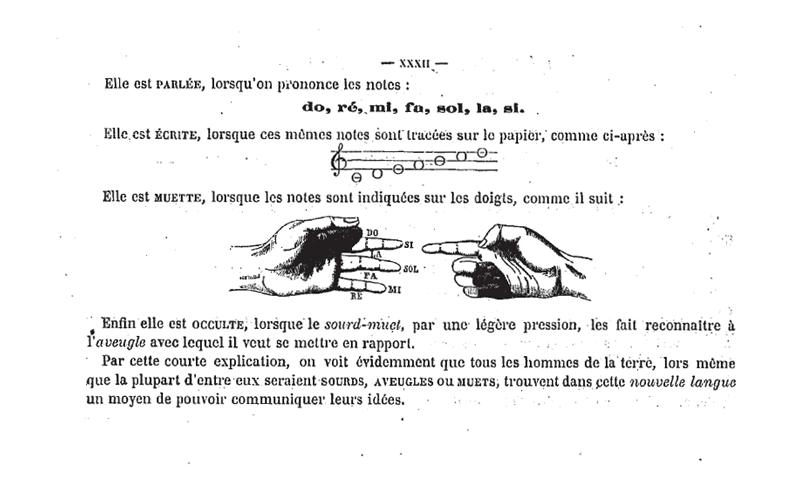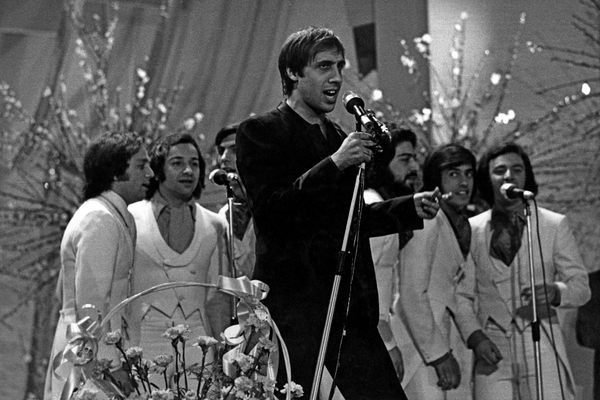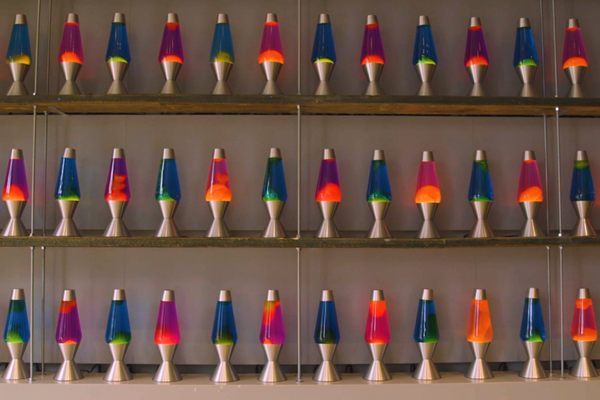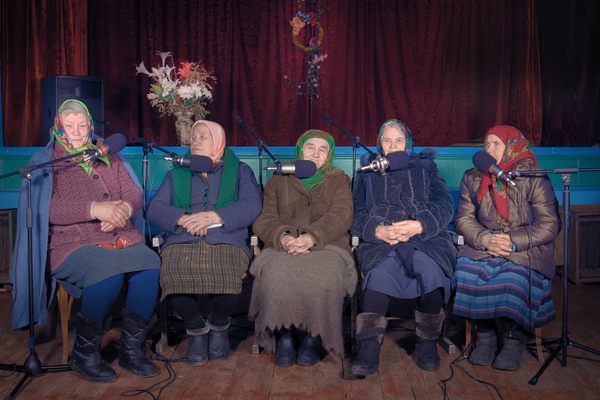A Reprise for a 19th-Century Language Based on Music
A French music teacher spent more than three decades creating Solresol. After he died in 1862, it was largely forgotten.

In the summer of 2017, modern-day devotees of Solresol, an obscure 19th-century attempt to craft a universal language based in music, applied for an ISO 639-3 code. A successful application would add Solresol—under the three-letter code “sud”—to the standardized registry of all known languages organized by SIL International, a non-profit that studies and catalogues languages. These supporters were seeking the formal recognition for Solresol that its creator was never granted in his own lifetime.
But in January 2018, the bid was declined. Shortly before last year’s application submission, SIL established stricter criteria for registration. In their official response (which mistakenly lists the incorrect year of the rejection), the organization stated, “Solresol does not appear to be used in a variety of domains nor for communication within a community which includes all ages. Therefore the current request for a code [sud] for Solresol has been rejected.”
“I believe the rejection was mostly a result of poor timing and maybe a bit of high hopes,” says Dan Parson, a musician who in 2011 founded Sidosi.org, a hub for Solresol resources and discussion. There, as well as on social media and chat apps, the community connects over grammar analysis, translation projects, and historical research.

But what allure does Solresol hold in the 21st century for people like Parson? To better understand that, it helps to know about the constructed language’s history and rules.

In recent centuries, those who have sought to craft a universal language have done so by a variety of methods. The a posteriori approach usually draws together the vocabulary or grammar of a few common tongues, developing something like Esperanto in the process. An a priori language—one created from scratch—is often more scientific in its aims, seeking a taxonomic system to organize letters, words, and sentence structure.
But for Jean-François Sudre, a music teacher in 19th-century France, the goal was to reredore solresol—construct a language—from music.
Sudre’s vision of a universal language transcended linguistic boundaries. From written and spoken word to melody, gesture, number, and even color, there are few ways that one can’t express Solresol, the language that Sudre spent more than three decades developing. But after his death in 1862, it was largely forgotten.
Fittingly, the global connections made possible by the digital age have forged a 21st-century life for Solresol. While books, such as Andrew Large’s 1985 The Artificial Language Movement, preserved general knowledge of the language’s history and structure, only over the past decade have websites, online communities, and education apps emerged to link hundreds of modern linguistic adventurers and music lovers through Sudre’s life’s work.

“When I became seriously interested in Solresol, I think it was really the result of the community that had just started building up again,” says Parson. As social technology has shifted, so has today’s Solresol community, migrating from a pioneering Facebook group to Reddit, Discord, and Sidosi’s own forums.
But while supporters have made efforts on these digital platforms to use the language in conversation, most discussion, though focused on Solresol’s grammar and vocabulary, occurs in English and other languages. Parson believes that moving Solresol beyond an intellectual exercise is key after the ISO bid rejection. “Though being told ‘no’ is always tough,” he says, “the obvious solution was just to start using Solresol more, as opposed to just talking about it.”
But the complex construction of Sudre’s system may explain the hurdles it can present for users.
Solresol began life as a sort of code. In his 2001 book Banvard’s Folly, the writer Paul Collins details the language’s earliest developments. Sudre set out in the early 1820s to link the 12 notes of the Western chromatic musical scale—A through G and the sharps and flats in between—with existing letters, as well as hand signals, in a system he called Téléphonie. Though he promoted Téléphonie’s use for long-distance audio communication—at that time, the maximum span across which a sound could carry—and reduced the system to four notes to accommodate a battlefield clarion, it garnered little real support from academic institutions or the French government.
Undaunted, Sudre soon settled on a middle ground between the clarion and chromatic approaches: a language based wholly on solfège, the familiar do-re-mi system where short syllables represent the seven notes of the diatonic scale, concluding with Si (the Romance language name for the final note that English speakers know as Ti). These seven syllables, both alone and in a vast array of combinations, were repurposed to form Solresol’s vocabulary; the musically adept could play or sing these notes, while others could simply take them at face value as a set of letters to be read or spoken. Simple tunes would now have a concrete meaning to listeners capable of connecting the melodies they heard with Sudre’s language.

Because the repetitive nature of a language with only a handful of letter and sound combinations could easily become confusing, Sudre planned to cap Solresol at five-syllable words, yielding a potential lexicon of 11,732 words, according to Large’s book, although that number has been disputed. Meanwhile, users would rely on a system of vocal inflection and modifying syllables to distinguish between tenses and parts of speech.
Soon, Sudre’s concern with truly universal communication led him to seek methods of expressing Solresol even beyond sound and the written word. Visual hand signals, already present in Téléphonie, could also be communicated through touch, similar to the signing system Annie Sullivan would someday use to teach Helen Keller. And as Isaac Newton analogized the rainbow’s seven colors to the musical scale, Sudre also saw a similar use for ROYGBIV, with red representing Do, orange Re, and onward from there.
At both public shows and the occasional private event across Western Europe, Sudre and a few fellow musicians demonstrated Solresol, successfully translating and communicating spontaneous offerings from audience members. According to Collins, the press covered Sudre’s endeavor and even notables, such as the novelist Victor Hugo and the composer Hector Berlioz, lauded the project. Still, the costs of touring—and of devoting the bulk of his time and energy to the unpaid labor of language creation—proved a financial drain, and as of Sudre’s death, Solresol had failed to earn any kind of official recognition.
His widow Josephine, contributing her own notes, took the first step towards preserving her husband’s legacy with the 1866 publication of his grammar and vocabulary manuscript, Langue Musicale Universelle. And in 1902, the Solresol devotee Boleslas Gajewski published a grammatical guide praising the language’s simplicity, even for those with little musical ability.

Over the 20th century, these volumes survived as little-read artifacts. Solresol’s turning point came in the 21st century, when new enthusiasts created and shared digitized copies of the books, while others contributed easy-to-read translations and lexicons, now hosted at the Solresol Revival Project. The language slowly shifted from mysterious curiosity to real linguistic endeavor.
But having access to the primary resources is only the first step in mastering Solresol’s idiosyncrasies. While the one-, two-, and three-syllable words in Solresol are loosely grouped according to their common usage, with pronouns, articles, and time units among the earliest words incorporated, Sudre introduced another level of complexity with Solresol’s four-syllable vocabulary. Starting here, a word’s “key,” or first syllable, is used to classify these word groups into seven families—Do through Si—encompassing very general topics like human life, industry, and government and administration. Some oppositional concepts, like laziness (mifamifa) and activity (famifami), are cleverly illustrated by reversed syllables, though it’s no hard and fast rule—see, for example, sidosido (to centralize) and dosidosi (eggs).
Unfortunately, Sudre left behind only one set of five-syllable words—under the category “animal, vegetable, and mineral”—with no comment on his plans for the other six sets. Modern Solresol users working to grow the dictionary face two major questions: Should the remaining thousands of potential new words continue to be classified according to a key syllable, and should words with opposite meanings be reversals of one another? Parson notes a conflict between the principles, offering the example of domifasi (strength), under the four-syllable Do class of human life, versus sifamido (weakness), a stretch for Si’s government category. With Sudre’s heavier preference for categorization by key syllable, says Parson, it’s the more likely rule to stand.
Sudre’s rigorous categorization also had the effect of crystallizing Solresol in time, specifically the 19th century. Despite the many five-syllable combinations remaining, his original lexicon has already maximized its shorter, simpler possibilities, in some cases reserving words for now outdated or obscure terms, such as various French government positions. Furthermore, commenters in Solresol’s digital communities have highlighted its failure to address concepts fundamental to inclusive discourse today, like means of identifying one’s race or sexual orientation.
Despite such conundrums, Solresol still can function as a whimsical code between its users, with social networks offering the first chance for many lovers of an eccentric language to meet others of a like mind. And community can lead to creation: Enthusiasts have crafted poetry, song, and even knitting patterns based on the notes and colors of the system.
For Parson, the opportunity to shed light on a forgotten life’s work propels his dedication to promoting Sudre’s language. “What drew me and has kept me drawn to advancing Solresol and its community is to give Solresol the second chance it deserves,” he says.
If 19th-century fans offered little more than praise for Sudre’s work, today’s enthusiasts are motivated to take more concrete steps. “I think Solresol can succeed in spite of those who offer[ed] only superficial support,” says Parson.
So now the community presses on with plans for more accessible Solresol resources, wider promotion and, of course, increased practical use. The goal is to better meet the new ISO 639-3 standards for a future bid.
And perhaps one day, as Sudre dreamed, many more will find understanding Solresol as easy as redodo-remimi-refafa.












Follow us on Twitter to get the latest on the world's hidden wonders.
Like us on Facebook to get the latest on the world's hidden wonders.
Follow us on Twitter Like us on Facebook